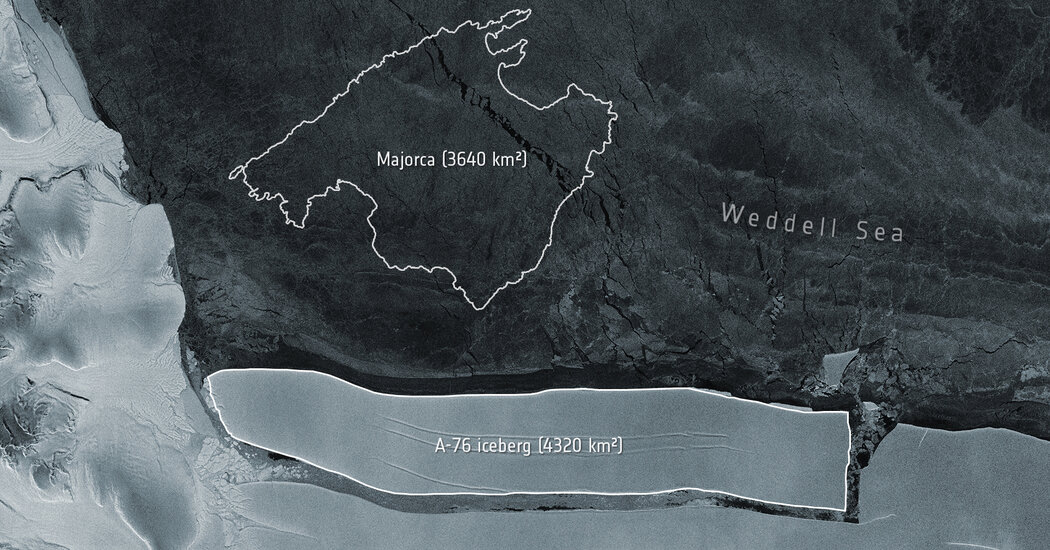
The largest iceberg on record, B15, broke off from the Ross Ice Shelf in March 2000 measuring more than 4,200 square miles (11,000 square kilometers). Despite being more than twice the size of A76, Dr. Shuman said, B15 did not destabilize the Ross Ice Shelf. B15 has since fractured into several icebergs, all but one of which have melted away.
According to Dr. Shuman, the last significant calving event on the Ronne shelf was in May 2000.
By studying the new iceberg, researchers hope to better understand the overall state of Antarctica’s ice shelves, said David Long, who runs the Antarctic Iceberg Tracking Database at Brigham Young University.
“Understanding when the ice sheets calve helps us understand whether some of these other more unstable ice sheets could break up or disintegrate,” he said. “And that would be important because as these more unstable ice sheets break up they can release the flow of glaciers that are held in place by the ice shelves.”
While ice shelves are floating on the water, the glaciers behind them are on land. So if they are released into the sea and melt, that would add to sea levels, he said.
The National Ice Center names and tracks Antarctic icebergs that are at least 10 nautical miles long or 20 square nautical miles large. The center, which is operated by the Navy, the Coast Guard and the National Oceanic and Atmospheric Administration, is currently tracking 42 named icebergs.
The question with A76 is what will happen next.
An iceberg about 100 miles long and 30 miles wide that had broken off from the Antarctic Peninsula in 2017 raised alarm in November when it appeared to be on a collision course with the British island territory of South Georgia. That iceberg, A68a, ended up grounding off the island’s coast. If A76 hits a similar current, it could reach the Antarctic Peninsula within months and could interfere with shipping lanes there, said Christopher Readinger, the Ice Center’s Antarctica team lead.
As A76 makes its journey, Dr. Jackson said, climatologists will be watching closely — even if much of the public isn’t. Dr. Jackson citea A68a, the iceberg that briefly threatened South Georgia.

Average Rating